Jeep is sometimes referred to as one of the most “patriotic” vehicle brands, and for good reason: Jeeps are often credited with helping the Allies to victory during World War II.
It’s one of the Jeep’s later gigs however, that perhaps cemented the Jeep’s image of tenacity and pluck.
We’re talking about the “Dispatcher Jeep” and its role with the U.S. Postal Service.
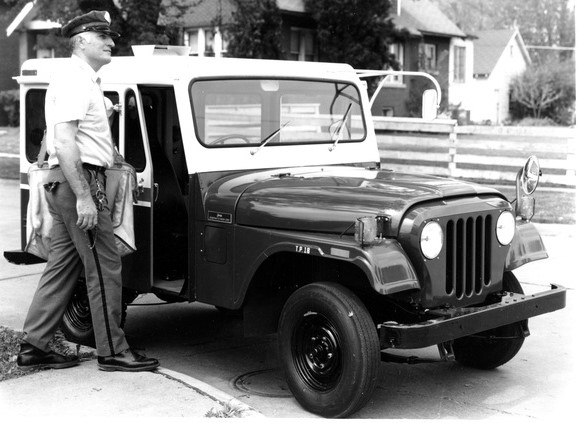
First, Some Pre-Jeep Postal Vehicle History
Before the Jeep showed up, the U.S. Post Office (USPS) initially relied on horse-drawn carriages, and then a mishmash of steam-, electric-, and gasoline-powered vehicles. The Post Office had no vehicle standardization in the first half of the 20th century , and it caused a ton of frustration with mechanics in the motor pools.
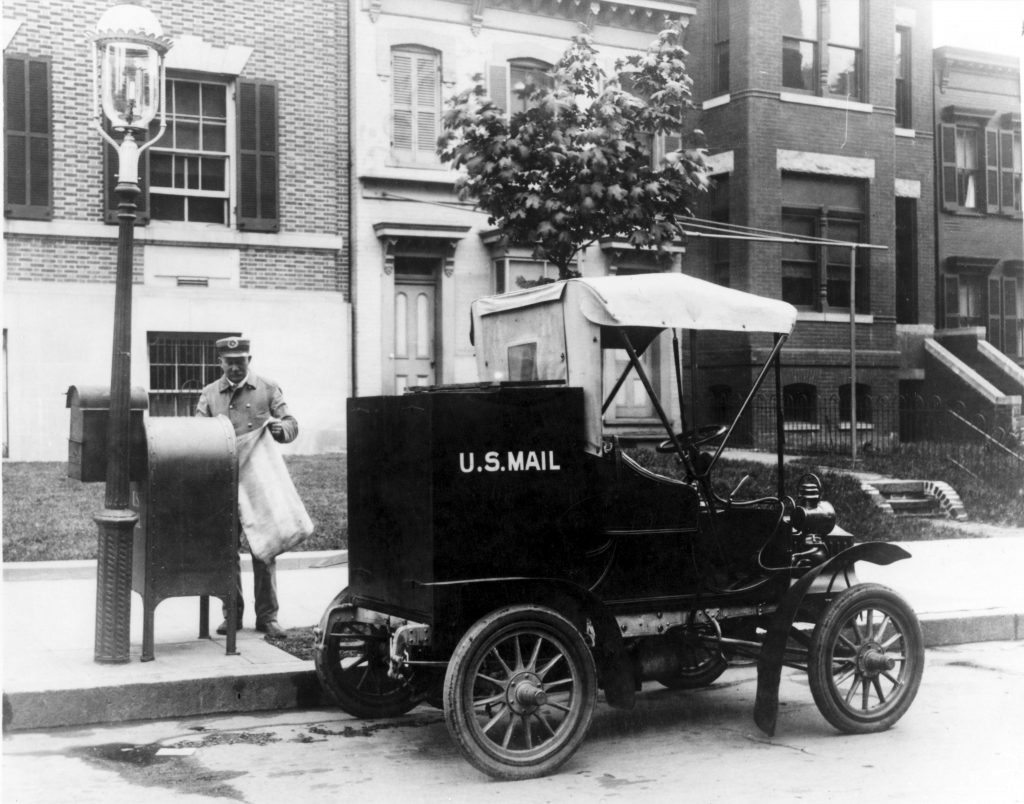
In fact, according to the Smithsonian, the Post Office at one point owned 4,000 vehicles between 43 models and 23 different manufacturers.
Through the 1930s, the USPS slowly began streamlining its fleet of trucks to just a few manufacturers, but as World War II hit, focus shifted to the war effort.
After the war, the Post Office finally had the budget to start buying new vehicles to update its ragtag fleet. The first vehicles the USPS chose were dubbed “Sit or Stand” trucks, aptly named because the driver could sit or stand during transport.
Then, Post Office officials discovered a rugged design from a company called Willys.
Enter the Dispatcher
After World War II, the Willys-Overland company secured the rights to produce the vehicle that we all recognize as the “Jeep.”
To the public, Willys first marketed its Civilian Jeep (CJ) as an agricultural tool similar to a tractor, but the company soon began to explore other opportunities.
Seeing the Jeep’s potential as a delivery vehicle, Willys simplified the already-spartan CJ by eliminating its four-wheel drive capability. It also added a column-shift option and an assortment of body styles, including a fully-enclosed panel van configuration. The folding windshield, now unnecessary, was eliminated.
The result was the “Dispatcher Jeep” or DJ, for short.
The DJ series began as a variant of the CJ-3A, simply called the DJ-3A.
As its predecessors did on battlefields a decade prior, the DJ quickly proved itself to be a rugged, reliable asset on the nation’s dirt roads and snow-covered streets—the Post Office had finally discovered its workhorse.
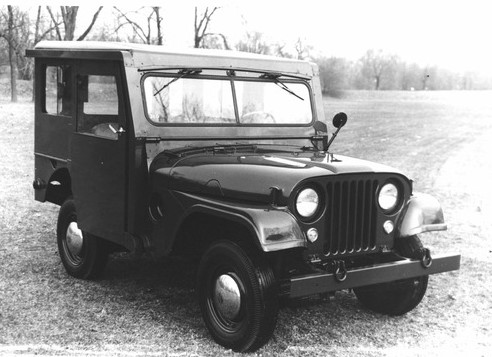
As the Civilian Jeep line evolved, so did the DJ, eventually adding DJ-5 and DJ-6 models. (There was even a limited run of Scrambler models made for the Alaskan Post Office.) DJs destined for mail service were usually right-hand drive to facilitate access to residential mailboxes.
Later DJ-series Jeeps typically feature a unique “bump-out” grille, which allowed room for AMC’s inline-six engines. (Curiously, CJ models retained the older-style grille and instead had a slightly extended frame and front fenders to accomodate the AMC sixes.)
DJs also got a large sliding door, plus an assortment of mirror and lighting fixtures to aid them in their mail-delivering task.
AM General is Born
It’s important to realize that, technically speaking, the DJ wasn’t always built by “Jeep.” To understand how that came to be, let’s try to understand the Jeep brand’s lineage along the Willy-Kaiser-AMC family tree.
Willys originally made the Jeep, but the company was soon bought by Kaiser in 1953. The new corporation was first called Kaiser-Willys, then it changed to Kaiser-Jeep.
Next, AMC bought the Jeep division from Kaiser in 1970 and Kaiser got out of the automobile business altogether.
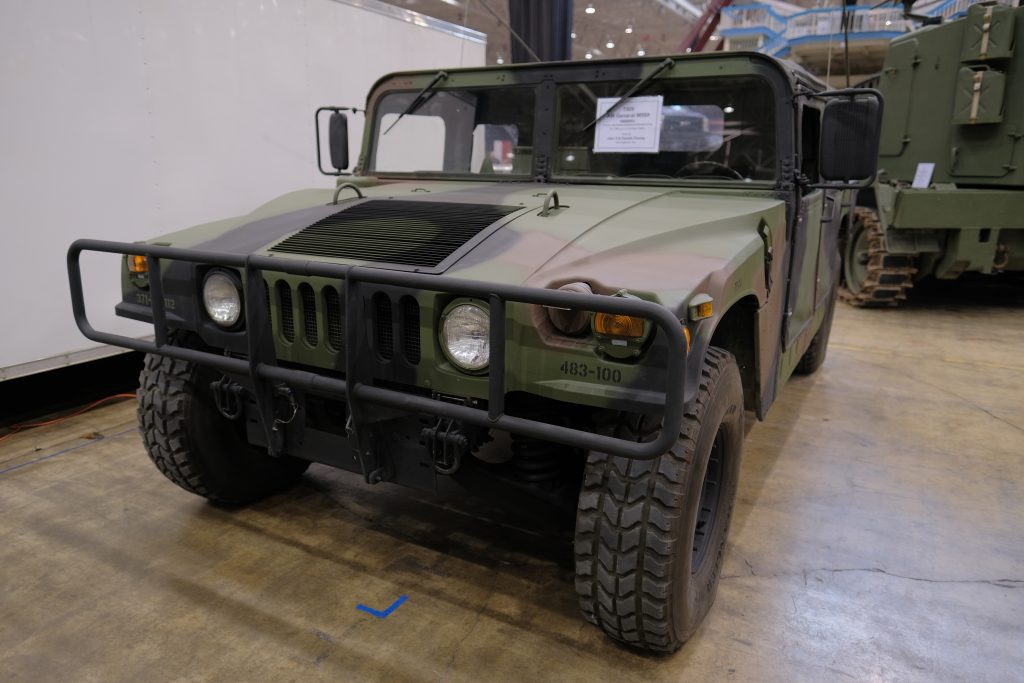
To handle the fulfillment of Kaiser’s previous military truck contracts, AMC created a subsidiary called AM General in 1971.
Then, Jeep DJ production moved under the umbrella of AM General.
Finally, when AMC was purchased by French-owned Renault, U.S. government regulations said that foreign companies couldn’t fulfill defense contracts.
Under those terms, AM General was sold separately to the U.S.-based LTV Corporation.
From DJ to LLV
As the Dispatcher Jeep entered the 1980s, the Post Office was already engaged in a search for a versatile replacement.
Instead of picking an off-the-shelf vehicle and tailoring it to mail delivery, the USPS called for a unique truck suited exclusively for the task.
A number of companies submitted designs but, in the end, the Post Office chose the Grumman LLV—and acronym that stood for “Long Life Vehicle.”

The LLV is the truck most folks born after 1990 are familiar with. Rugged and versatile, Grumman (a company that also helped build the Apollo Lunar Module and F-14 Tomcat fighter jet) created the LLV with an expected service life over 20 years.
Though it was a largely one-off design, the LLV’s chassis is based off an early Chevy S-10 Blazer. Most LLVs are powered by the venerable “Iron Duke” Pontiac 2.5L engine connected to a light-duty Turbo-Hydramatic 180 transmission.
The Future of Postal Delivery
The oldest Grumman LLVs are reaching beyond their expected service life, and the Post Office has once again started searching for a new mail delivery vehicle.
While it’s unlikely that you’ll see a new Jeep Wrangler delivering your mail in the future, carriers have used some off-the-shelf vehicles (like panel-wagon versions of minivans) in their fleet.
The reality is the Post Office is searching for a unique vehicle that expands the Jeep’s and LLV’s legacy. Early prototypes have teased gasoline, hybrid, and all-electric drivetrains—all with the expectation of long service intervals and anvil-like reliability.
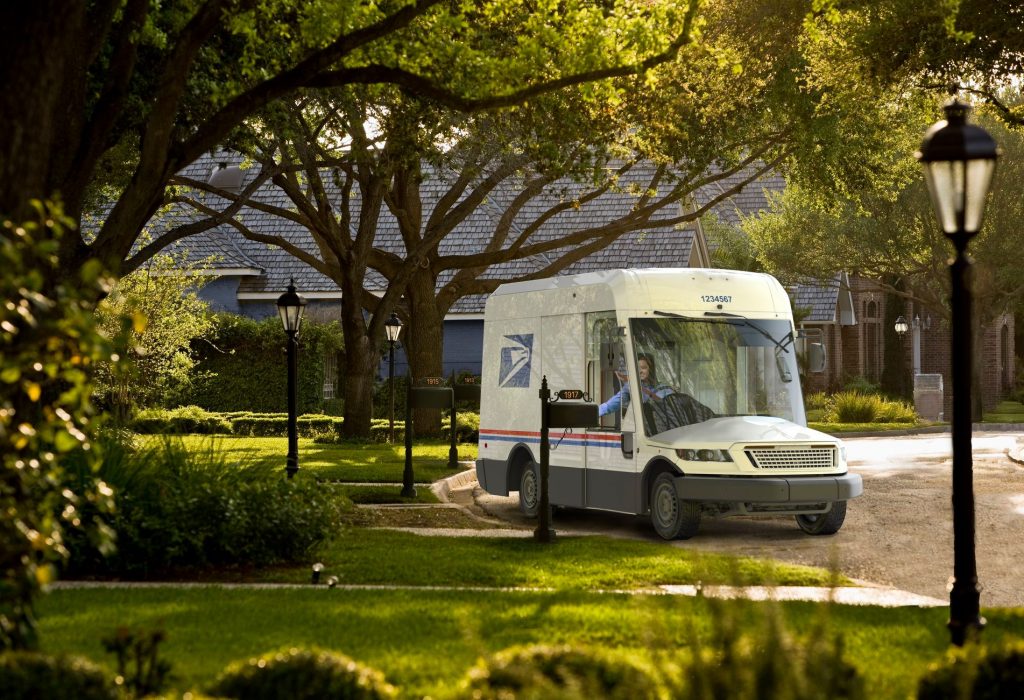
Jeep DJ Collectability
Similar to their CJ counterparts, DJ-series Jeeps have a growing collector’s market. The fact that the DJ shares so much of its chassis and running gear with other vehicles can make it easier to repair/restore than other niche automobiles. Better still, one of the core tenets of the DJ Jeep was serviceability, which means that Dispatchers are relatively easy to wrench on, without breaking your budget.
The problem with Jeep DJs (like the CJ) is rust. The days of scoring a cheap junkyard DJ are long gone and finding one in a farmer’s field that hasn’t returned to Mother Earth is nigh impossible.
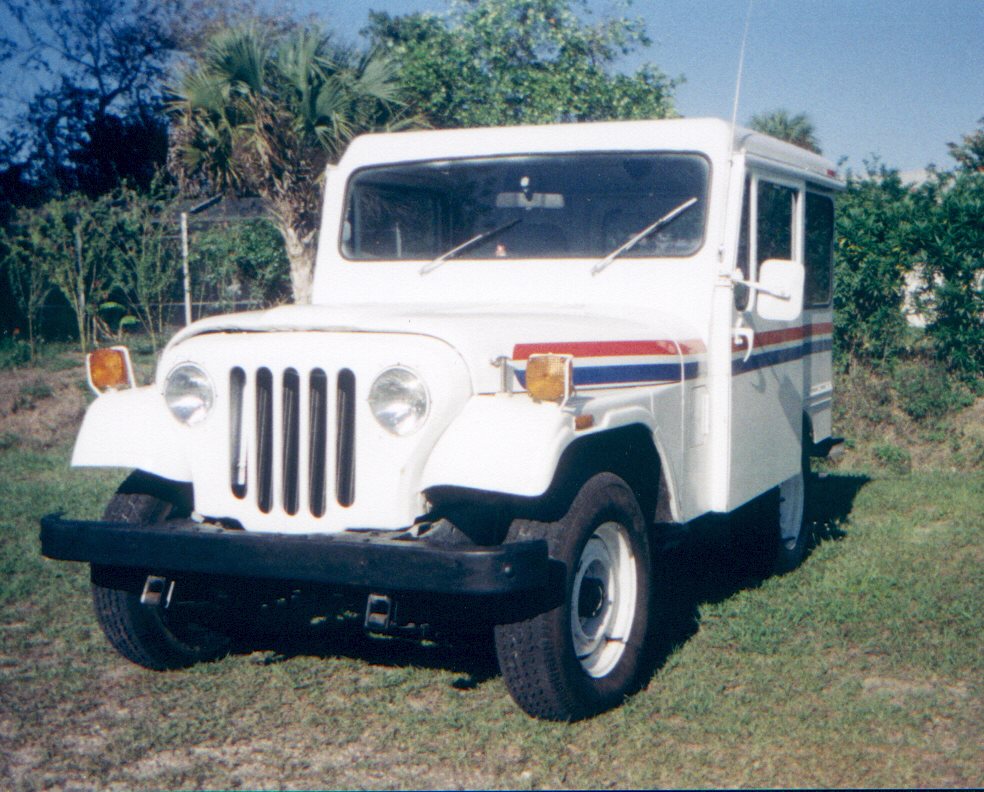
If you’re looking to restore a DJ, start with the best body/frame possible. Drivetrain, chassis, and suspension issues can usually be resolved with much greater ease than, say, a frame repair or the need to custom-fabricate body panels.

You forgot to mention the Studebaker “Zip Van”.
Manufactured in South Bend, Indiana.
Yes, the mail vehicle family tree certainly has a lot of fascinating branches like the Zip Van–unfortunately, we couldn’t include all of them in the article.
It’s interesting to note, as seen in the initial photo above, that AM General (nee AMC) DJ production actually took place in the old Studebaker plant.
That’s because Stude’s “General Products Division” was bought by Kaiser-Jeep as Studebaker began to fold in the 1960s. Then, when AMC bought Kaiser, it kept the South Bend assembly line humming with DJ production.
[…] .story__body img.size-large { min-width:100%; } Share international For Sale googletag.cmd.push(function() { googletag.defineSlot('/5361/spn.hemmings/hmn_blog', islandAdDimensions, 'div-island-1358863163287-3').addService(googletag.pubads()).setTargeting("pos", "blog_island").setTargeting("category", ["alt-power-vehicles", "buses", "dune-buggies", "hcc", "motorhomes-and-trailers", "motorsports", "service-vehicles", "tv-and-film-cars", "videos"]).setTargeting("tag", ["am-general-dispatcher-jeep","battery-electric-vehicle","coppa-di-sicilia","dispatcher","eighties","gm-silver-volt","postal-jeep","postal-vehicles","skoolie","thomas-crown-affair"]); // googletag.pubads().enableSingleRequest(); googletag.enableServices(); }); googletag.cmd.push(function() { googletag.display('div-island-1358863163287-3'); }); […]
Well I hired in to the P.O. in 1985 when these were all falling apart and they were looking for the replacement (LLV). The LL came not a moment too soon as not only were the DJs, er, um, rather bare-bones vehicles to begin with, they were beaten like a rented mule. The township where I worked was mostly VERY washboarded gravel roads, really bad! And the other abusive thing is that these vehicles never warmed up… They averaged six or seven miles/day, much of it one- or two-block trips. The newest ones at that time were ’70s AM General product, with power steering and an OHC 4-cylinder (VW?). But the P.O. seemed to feel that nothing was too old or raggedy to be deemed a lost cause, and valuing their valued employees as they did, they “reconditioned” (sometimes thrice over, I think) the derelict ’60s DJs (some may have been ’50s vintage!). By “reconditioned”, I mean that I saw new floors brazed in, which had then rusted out again to where you could see the road. Those pre-AM General DJs had no power steering. So the wheel was HUGE and it was about eight turns lock-to-lock! My most harrowing experience was getting on the highway in one of them on a winter day, getting to 40mph, and having it suddenly start to veer/weave increasingly left and right (That eight turns lock-to-lock and two straight axles on leaf springs became a SEVERE problem!). Just before it became totally unstable, I managed to slow it and get it under control. I was in engineering school at the time, knew a bit about vehicle dynamics, and pulled into a gas station where I checked the air. Two of the tires were down to less than 15psi, and they were at opposite corners. I nearly died that day. Even with proper tire pressures, 15mph was very scary, if you were driving on that washboard, especially in winter…
I worked two summers, one for the US Post Office and one for the newly-reorganized US Postal Service. The DJs were showing their age at the time but were generally reliable (and noisy). Two things had to be watched carefully — the transmission could vibrate itself from “Park” to “Drive” and roll away despite the handbrake being set, and the latches for the sliding door didn’t always latch properly. Coming to a stop while running with the door open could get noisy and clip your elbow. The sliding windows tended to stick and it was easier just to run with the door open.
Around 1970 I bought a 1960 Jeep RH drive stand/sit van by sealed bid from the Post Office for $76.01. I used it for several years to haul to the dump and even drive to work sometimes. The engine would scream on the interstate but never had a problem with it.
The color photo at the top of the article shows both white and blue DJ’s on the South Bend production line. Why were both colors produced at the same time? What determined which color scheme was sent to a specific post office branch? I thought the USPS switched from blue to white at some point but did not maintain both color schemes as new production. Insights on this issue? Thanks.
Knowing the P.O., They probably bought enough of the post office blue, ran out & had to go with white, who knows they have been changing things around unnecessarily on lots of stuff that could have been kept original & saved a lot.Of course I understand the times they are a changing.I guess my point being the place knows how to waste money! I’m all for the environment, sustainability and all that & saw areas for major improvement where they could do more for the community.For instance the annual food drive is just an example of the positive.They can do more and I for 1 wish they would.Thats enough of ranting & going of on a tangent. So,back to the jeep, those were what I trained on and drove the years I was a carrier, and by the way if you know of any I would love to get one! I’ll do the work myself! I guess if I’m lucky hopefully I’ve still got a few good years left!
I noticed the same thing. I started as a mechanic for the Post Office in 1976 and and all of our 76 model DJ5D were coming in white. what i do notice is all the blue ones are left hand drive. Check the mirrors and the vin 5 is the year and 0 means left hand drive. what cought my attention on the white Jeep was the 3 as the second number. at one time that would have meant 3/4 ton. After some more research I found a picture of a DJ5E electric and it had a 3 in the second position. So the white ones were electric dj,s.
I Carried Mail in Canton Ohio, for 37 years ,starting in 1975, Canton did not get new Jeeps until 1980 and they were all white, with 4 cylinder engines.All the old ones were 6 cyl. engine and they all had problems with the transmissions jump out of park, on or off, even with hand brake on. but as the mail vol. increased we needed the bigger vehs. We also had a 1 ton looked like an ice cream truck Rt. hand drive, made by AMGC
I worked for the postal service 31 years as a letter carrier starting in 1977. My father in law worked in maintenance and he told me it was too expensive to keep painting the keeps blue because the color faded quickly . It was cheaper to paint them white . It was cheaper to paint the red and blue mailboxes just one color also ; the blue you see today .
Here in FL the Postal Service declined to auction the last few DJ’s but instead sent them straight to the junkyard, with instructions to cut them up and not sell for parts. Sort of like the M-151 Ford. Unsafe for the general public, but they were ok for Postal workers (or in the case of the M-151, for the military).
I don’t think there are any of them being used anymore for Rural Route/Box Delivery but you do see the occasional rusty one around.
I imagine they will not auction off the LLV’s either: too closely related to the Postal Service.
DJ were used in Toledo as pizza delivery vehicles – years before Domino’s DXP “Ultimate Pizza Delivery” vehicle was even a gleam in a marketer’s eye… . Jo Jo’s Pizza (founded in 1957, still in business today) used DJ’s painted in medium green as their “Pizza Patrol” delivery vehicles.
And how about an article on the last Post Office car – wasn’t some RH drive Saturn SL wagons offered as rural postal delivery vehicles?
LLV’s did not come with turbo 350’s. They had the French made turbo 200, metric trany in them. I was a mechanic at the Post Office. We replaced the 200’s with TH 350’s later on.
Hey Henry, you’re right. We dug a bit deeper and actually found the designation to be TH180. We made the update in the story–thanks for the heads up!
I’ve worked for the USPS since 1989 . I remember the old Jeeps -1/4 and half ton’s. I took a then brand new LLV with less than 50 miles up to 100 mph on Route 9 in CT when we first got them . I’ve heard the reason Grumman got the contract is the US Navy had just cancelled their run of F-14 fighters, this was the pay off . What most people don’t know is when the USPS cancelled another run of the LLV, Grumman destroyed the body tooling. That’s when the Grumman logo came off the trucks, wish I had stolen one . I have a copy of The Grumman LLV owners and service manual . They are too small and too inefficient . Mine gets 8 mpg ,never driving over 50 mph-driving 28 miles a day .
In 1998, the PO where I worked (west side Detroit suburb) acquired a bunch of white with red/blue striping Ford Windstars, which were neither “LX” or whatever trim levels Ford offered to non-fleet buyers… The were badged Windstar “3.0” and what they were was totally stripped. No A/C, no carpet in the back, just rubber mat. I thought it odd that they didn’t use rubber mat in the front, because most of the “streets” in this suburb were dirt… meaning mud in the winter. The carpet in those vans became pretty nasty.
The Windstars did not even have a radio, nor the dash-mounted oscillating fans we had in the LLVs. They were suffocatingly hot in the summer. I do remember setting the heater control to “coldest” and the heater fan to “hi” to blow warm air from the dash vents, to try to get the hot air out of the car. I also remember one of the funnest things for me was taking them “off-road” into the mud, setting the hand brake, and flooring the throttle while steering full left and right lock. I was able to completely cover them in brown mud, which was fulfilling after a day of trudging through the snow and being attacked by dogs.
You’d think by now they would invest in 4×4″s for us New Englanders, not to mention the other snowy parts of the country!
Don’t forget the 1967 Right Hand Drive AMC Ambassador Postal Delivery Cars!
Now THAT^^^ is cool, Thanks Jeff–I learned something new!
I just bought a 1974 dj5 Jeep it has conversion kit so steering is on the left now it has a lot of play in wheel would that be the gear box
Supervisors got LHD. I think every 1 in 10 were LHD.
I had three of the 1971, 1972, 1974 little mail jeeps, until 2006. Had to have three so I would have one working. Still love them, I put a 12 volt fan inside it with a garden hand pump to clip to the fan, that was my air conditioner it was 114 inside the jeep I put insulation in it, but the top of the jeep would be so hot it just didnt work, could not go fast enough to cool it off. Mine was so cool painted it, nice wheels, I put the cool poster of stamps on the door, decorated for all holidays, battery xmas lights wreaths, cards all in the back windows. My route loved my Jeep
Kids would come out to great me, jump on the back for a block.We would shoot rubber bands at each other, on Saturdays I was the one to wait for. I contracted the mail so I could do what I wanted with the jeeps I bought, the only cool Jeep I ever saw.
I have a DJ Dispatcher, left hand steer. It has very low miles on it, and zero rust. I was told they were used by the postmaster for around town task. It has a 232 six, and a three speed auto. Rally Mike
Hi. I saw comment on Studebaker zip and understand space limitations but the 1960-65 Jeep FleetVan built on Dispatcher is a neat postal vehicle.
FJ3 1960-61-62-63. production approx. 7300. With fj6 1965-up prod Rose to 14,000 in rounded numbers. (My data is elsewhere at the moment.)
And let’s not forget the International Scout Postal vehicle. In 1967, International won a Postal Service contract for 7,920 RHD, specially equipped Scouts. Some 6,745 of them had automatic transmissions, with the remainder using manual transmissions and some having four-wheel drive. IH immediately started the development of another version for the next upcoming contract and it had the requisite sliding doors. Kaiser Jeep underbid them that time and the Jeep DJ gained a decades-long lock on that market. IH did continue to build postal Scouts, however, with many being sold to Rural Route drivers or agencies. They had a special postal option that included some of the items developed for the ’67 postal contract vehicles. Of course, IH also sold lots of Metros, Metro-Lites and so on to the USPS as well.
My first vehicle was an early 70’s retired Amy purchased at a postal auction. Drove it like a champ with a bean bag chair for the left side passenger. Many 1000 mile road trips, (at 55 mph) until my younger sister “borrowed” it when I spent a summer in Alaska and ran it out of oil. Miss that bugger. Worst experience was forgetting to rematch the hood and getting on the highway. You can guess the result
had a left hand drive 40 years ago- 2 speed trans – LOVED it – looking for one now – anyone know of one anywhere for sale please let me know
Facebook market place has them. Also there are 2 Facebook just for DJ’s. Gone Postal and DJ5 Postal Jeep sites.
I’ve got a 69 postal available. Gm4cyl powergglide, all there,
I have a 76 DJ5D I converted to LH stearing, installed a 225 Dodge slant 6 and 3 spd manual, slotted mag wheels and rolls down the road much better on radial tires, narrowed PU truck rear axle, grenade shifter knob. Didn’t get no respect till I painted it duck boat OD green with Wal-Mart spray cans. Now can’t get anywhere for everybody wanting to talk about it, buy it, take pix of it, trade their car/truck for it etc. It gets more attention than my brothers hopped up 65 mustang. It’s my daily driver since 1993.
Drove DJ-5 Ls and Ms on a route for years – they were the best for a small AUX route. I now drive the Mercedes Metris on my route but still run my ‘85 “Captain America” DJ-5L around town.
Too bad we can’t add photos…
Why have you omitted the most critical chapter of Jeep history, the Ford Jeeps of World War II?
When the US entered WWII the government ordered as many Willys Jeeps as they could produce. But Willys wasn’t equipped for such extensive production, so the government turned to Ford. Using Willys’ tooling, Ford was able to supply the required numbers of general purpose vehicles (later referred to as ‘gp’) in due time. When the war ended the government sold them off to the public at $100 a copy. They were titled as Fords with ‘GPW’ as the body type, which stood for General Purpose Vehicle. (No explanation was ever provided why they weren’t called “GPV”.)
Soon the word ‘Jeep’ was coined from pronouncing ‘GP’ as one word.
PS: When they were sold, they were titled as 1943 Fords!
Hey Jason, thanks for reading. We wrote this article to focus solely on the DJ/Postal variants, but we have plenty of articles on the CJ and Willys MB/Ford GPW.
You may enjoy this article – It’s a Ford Thing: Check Out This GPW Restored by a Military Veteran (& Learn About the Jeep’s Blue Oval Influence)